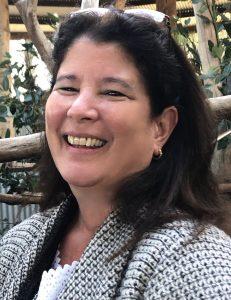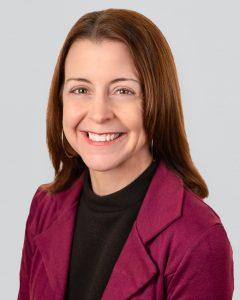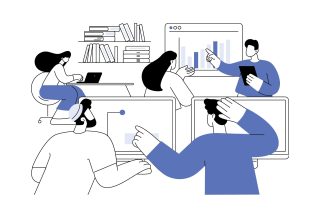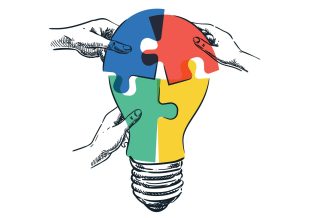IDEAS
What do YOU need to learn from ME?
By Suzanne Bouffard
Categories: Collaboration, Facilitation, Fundamentals, Implementation, Learning designs, Online learning, Personalization, TechnologyAugust 2022
Tracey Tokuhama-Espinosa is an expert in neuroscience and the science of learning, and the founder of Connections: The Learning Sciences Platform, which provides evidence-based support for educators in over 40 countries. She will be a keynote speaker at the 2022 Learning Forward Annual Conference Dec. 4-7 in Nashville, Tennessee. Hers will be the first Learning Forward conference presentation to use a flipped format: Before the conference, attendees will be encouraged to view a short preview video and submit questions and reflections. Tokuhama-Espinosa will use that feedback to craft her presentation to meet the audience’s interests and needs.
What is a flipped presentation, and why do you prefer it to a traditional approach?
In a flipped approach, the audience’s needs become the presentation. Before the conference, I make a short video with a taste of what’s to come, and the audience members begin to explore that further and think about their own needs and questions. They share those questions beforehand and then the content that is most interesting and relevant to them gets baked into the presentation.
In a flipped approach, the audience’s needs become the presentation. #TheLearningPro #LearnFwd22 Share on XIf I give a presentation without knowing your specific needs, it’s like throwing spaghetti at a wall. Something is going to stick for somebody at some point, but I’m not meeting the majority’s needs because people haven’t taken the opportunity to self-assess what they need.
Learning from a conference works best if the participants select carefully what they need, they attend the sessions that are most important to them, and then they follow up on what they’ve learned. That’s also the idea behind the flipped presentation.
''Learning from a conference works best if the participants select carefully what they need, they attend the sessions that are most important to them, & then they follow up on what they’ve learned.'' #LearnFwd22 Share on XI believe this approach is an essential shift for professional learning. One of the reasons a lot of educators find professional learning to be a drag is that it doesn’t meet their specific needs. It is often dictated from on high that everyone needs to learn the same thing in the same way at the same time. But our life’s work in education is to differentiate instruction. We try to treat our students as individuals. Why don’t we treat our teachers that way?
How did you start using the flipped approach?
I teach a course at Harvard that is completely flipped. In 2016, the university approached me and some other faculty members about teaching a course online. Originally, it was a hybrid in-person/online approach. It wasn’t really working because the teacher tends to pay more attention to one group or the other, usually the people in the room. And the in-person students started shifting to online anyway because it’s more convenient. By the third class, most people were attending online, even if they lived next door.
So when the university offered a handful of faculty the opportunity to go fully online, with support to shepherd us through a redesign process, I decided to do it. Very few of the participating faculty were willing to do flipped, but I said let’s go for it because I thought I’d have a chance to go much deeper with students.
The way it works is that I get out the core concepts in the preclass video. Students respond to a discussion board prompt, and I select a handful of those as jumping off points for discussion in the live class. It’s like having three classes in one because we address the content knowledge, then we get to explore what others in the class are doing, and then we get to do a deep dive into the information together.
When we started doing this, the ratings went way up. People said this is the way learning should be. We got such great feedback that, when COVID-19 hit midway through the semester in 2020, the students asked me for an extra class on teaching online. Some of them were professors or leaders of professional learning, and they said, “We don’t know how to continue our work during COVID, and we need help.” I helped them learn how to use the flipped approach. There was one student who ran professional development for medical professionals who had a conference coming up, and I suggested she flip the whole conference.
Since then, I have done flipped presentations for all my keynotes, and sometimes fully flipped conferences. It has been a hit everywhere I’ve done it. I find that participants are more engaged because it is about them and their needs. It’s impossible not to pay attention if you are the center of attention. And it’s impossible not to learn something if it is based on your questions.
In that spirit, can you give us a preview of the theme of your presentation?
The talk is called, “How Time and Tools Have Changed in Education Forever Thanks to COVID.” As bad as COVID has been, a lot of wonderful things have come out of it. Our forced adaptation due to the pandemic has opened our eyes to a lot of the things that have been problematic for years. And it has provided the impetus to finally change some of the things we’ve been unhappy with for a long time.
For example, we are rethinking the time and priority that we put into certain educational components. Before, we would hope there was a 1-1-1 ratio of preparing, giving, and evaluating a lesson. But when COVID hit, we realized there was so much more involved in giving the right kind of feedback so that students can learn. So now, the ideal is more like a 3-1-3 ratio: three hours of preparing, one hour presenting, and three hours of reflecting and gearing up for the next lesson.
Educators’ use of certain types of tools is also changing. Before COVID, teachers often ignored educational technology. But during COVID, they started to try things and came to see them in a different light.
For example, one math teacher told me that, before the pandemic, he didn’t use apps like the Photomath app, which allows you to take a picture of any math problem and then shows you how to solve it. He felt like he was cheating or not doing his job if he used it. But when he saw that his explanation and the app’s explanation were slightly different and that seeing multiple approaches to the problem was beneficial to students, he started to appreciate the app and think differently about using ed tech.
How are those shifts likely to have a long-term impact on education?
If you break down learning into its smallest parts, you have knowledge, skills, and attitudes. Rethinking time and tools can help us fundamentally rethink the way we address each of these.
''If you break down learning into its smallest parts, you have knowledge, skills, & attitudes. Rethinking time & tools can help us fundamentally rethink the way we address each of these.'' #TheLearningPro Share on XWith regard to knowledge, we got hooked for a long time on a certain kind of content [discrete math and reading knowledge], in part because of the legacy of No Child Left Behind. During COVID, we realized that what you have to prioritize are thinking processes and helping kids to be good critical thinkers throughout their lives, instead of just regurgitating content. As a result, we started to rethink how we present and assess content. For example, we know low-stakes testing is a great way to enhance memory, so some teachers are now offloading knowledge assessment with self-graded quizzes worth zero points. The message is, “We don’t care about your score; we just want you to know the content so that, when we are together, we can work on skills.”
The way we are working on skills and attitudes is changing, too. For example, during COVID, we realized the need to prioritize relationship skills and mental health. After about 15 years of researchers and educators talking about the importance of social and emotional learning, it finally bubbled to the top. Teachers are starting to realize that if they use ed tech tools for certain tasks, they are able to have more time for being human, for the important relational aspects of learning, including encouragement, motivation, and diagnosing students’ needs.
How can educators make sense of all those shifts in their day-to-day work?
I like to think about education as having holons. A holon is something that is part of a whole but is also a complete entity in and of itself. For example, your hand is a complete entity, but it’s also part of your body. A leaf is its own thing but it is also part of a tree.
Learning is comprised of holons, but we don’t always see the whole. We’re good at breaking things down into their smallest parts, but we’re terrible at putting the whole back together again.
I think this is one of the main reasons many teachers give professional learning low ratings. Those of us who are running the professional learning aren’t helping them put all the pieces together into a whole. So when teachers are presented with a new concept or way of doing things, they think, “Now the administrators want us to stop what we’re doing and do this new thing instead,” instead of understanding that the new information is part of the puzzle, not a replacement for another piece.
Professional learning should help educators create their whole. My hope is that COVID, and the changes it has brought, will be a catalyst for that, and for a new form of education that meets educators’ and students’ needs better than we have done in the past.
Download pdf here.
How to participate in the flipped keynote
To learn more from Tracey Tokuhama-Espinosa, join her at the 2022 Learning  Forward Annual Conference Dec. 6 in Nashville, Tennessee. All registrants will have access to her prepresentation video and will be encouraged to submit questions to inform her flipped keynote presentation in the weeks leading up to the conference.To register or learn more about the conference, visit conference.learningforward.org.
Forward Annual Conference Dec. 6 in Nashville, Tennessee. All registrants will have access to her prepresentation video and will be encouraged to submit questions to inform her flipped keynote presentation in the weeks leading up to the conference.To register or learn more about the conference, visit conference.learningforward.org.

Suzanne Bouffard is senior vice president of communications and publications at Learning Forward. She is the editor of The Learning Professional, Learning Forward’s flagship publication. She also contributes to the Learning Forward blog and webinars. With a background in child development, she has a passion for making research and best practices accessible to educators, policymakers, and families. She has written for many national publications including The New York Times and the Atlantic, and previously worked as a writer and researcher at the Harvard Graduate School of Education. She has a Ph.D. in developmental psychology from Duke University and a B.A. from Wesleyan University. She loves working with authors to help them develop their ideas and voices for publication.
Categories: Collaboration, Facilitation, Fundamentals, Implementation, Learning designs, Online learning, Personalization, Technology
Recent Issues
LEARNING DESIGNS
February 2025
How we learn influences what we learn. This issue shares essential...
BUILDING BRIDGES
December 2024
Students benefit when educators bridge the continuum of professional...
CURRICULUM-BASED PROFESSIONAL LEARNING
October 2024
High-quality curriculum requires skilled educators to put it into...
LEARNING TO PIVOT
August 2024
Sometimes new information and situations call for major change. This issue...












